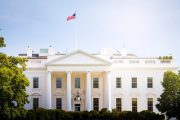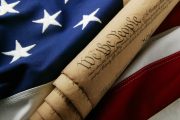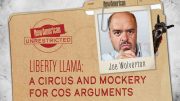
When asked where to send money to help the victims of Hurricanes Harvey and Irma, FEMA (the Federal Emergency Management Agency) administrator Brock Long referred them to the National Voluntary Organizations Active in Disaster (NVOAD)’s website, NVOAD.org. NVOAD is nearly 50 years old, a coalition of private, mostly Christian or faith-based, groups that specializes in helping victims recover from natural disasters. It was founded in the aftermath of Hurricane Camille, which hit the Gulf Coast in August 1969.
The seven founding members were the Seventh-Day Adventist Church, the Southern Baptist Convention, the Mennonite Disaster Service, the St. Vincent de Paul Society, the Christian World Relief Committee, the National Disaster Relief Office of the Roman Catholic Church, and the American Red Cross. Since 1970, it has grown to 110 members, including Catholic Charities USA, Church World Service, Episcopal Relief and Development, Habitat for Humanity, the Humane Society, Jewish Federations of North America, Latter-Day Saint Charities, Nazarene Disaster Response, Presbyterian Disaster Assistance, the Salvation Army, and the United Church of Christ.
What’s missing from the list? Any government agency. Not only is it supported privately, NVOAD, along with numerous other church-related and faith-based charities, is providing an estimated 80 percent of the relief efforts directed to hurricane victims. Said Greg Forrester, CEO of NVOAD, “About 80% of all recovery happens because of non-profits, and the majority of them are faith-based.” Their funding is “all raised by [the] individuals who [then] go and serve, raised through corporate connections, raised through church connections,” and fundraising amounts to billions of dollars worth of assistance to those victims.
Examples abound:
• The United Methodist Committee on Relief sent work crews skilled in helping homeowners remove mud from their homes and then assist them in applying for benefits and making insurance claims;
• The Convoy of Hope had three trailer trucks stocked with food, water, and sanitary supplies in Florida waiting to be deployed to the areas which were the hardest hit;
• Samaritan’s Purse, run by Reverend Franklin Graham, had trucks filled with chainsaws and volunteers skilled in debris removal. It also offered contracting services to help the victims rebuild their houses;
• United Methodists sent most of their 20,000 trained volunteers called “early response teams” to Texas and Florida to assist as well.
Reverend Jamie Johnson, the director of DHS’s Center for Faith-Based & Neighborhood Partnerships, gave credit to those groups and volunteers:
FEMA cannot do what it does so well without the cooperation of faith-based, non-profit organizations and churches. It’s a beautiful relationship between government and the private sector and it is something to behold.
It may be, in Johnson’s words, “something to behold,” but the question is: Why is the federal government, under the Constitution, involved in the disaster recovery efforts at all? Part of the answer is precedent: Congress approved the expenditure of more than $50 billion of taxpayer funds to assist in the recovery from Hurricane Sandy in 2012. But part of the answer is a reflection of how government has edged out private disaster assistance over the years, assistance that is now proclaimed by many to be a right.
It wasn’t always so. As a government official, Grover Cleveland first served as the mayor of Buffalo, New York, in 1882, where he quickly became known as the “veto mayor,” resisting the temptation to get local government involved in places it didn’t belong. When he became New York’s governor in 1883, he became known as the “veto governor” for the same reason. When he became president (serving two separate terms: 1885-1889 and 1893-1897), he became the “veto president,” vetoing a record 584 bills (only seven of which were overridden).
One of those bills that he vetoed continues to resonate today. Early in 1887, a drought afflicted farmers in Texas, and the Congress passed the Texas Seed Bill, which included $10,000 to provide seed grain to them to help them recover. In explaining his veto Cleveland said:
I can find no warrant for such an appropriation in the Constitution; and I do not believe that the power and duty of the General Government ought to be extended to the relief of individual suffering which is in no manner properly related to the public service or benefit. A prevalent tendency to disregard the limited mission of this power and duty should, I think, be steadily resisted, to the end that the lesson should be constantly enforced that, though the people support the Government, the Government should not support the people.
Cleveland then added words that echo today, as private individuals and charities assist in recovery in Texas and Florida: “The friendliness and charity of our countrymen can always be relied on to relieve their fellow citizens in misfortune.” Cleveland then went on to say that if members of the Congress wanted to help the Texas farmers, they were certainly free to offer their private energies and resources, but history doesn’t record any of them doing so.
If the Constitution were followed today, those relief efforts would be 100-percent private. They would also be far larger, as more people would have more money left after paying their much smaller taxes. And the recovery efforts would be even more efficient and effective without the “assistance” of agencies such as FEMA and the DHS.
Image of hurricane: NOAA
An Ivy League graduate and former investment advisor, Bob is a regular contributor to The New American magazine and blogs frequently at LightFromTheRight.com, primarily on economics and politics. He can be reached at [email protected].




